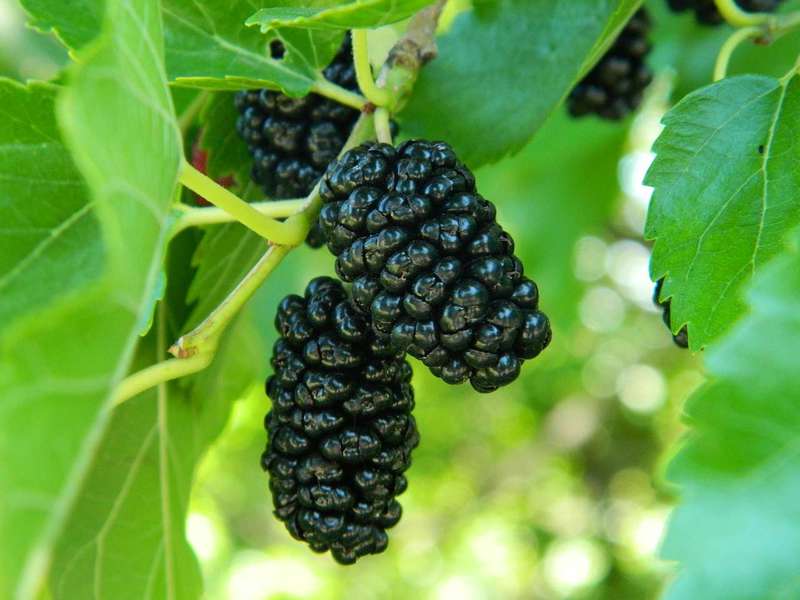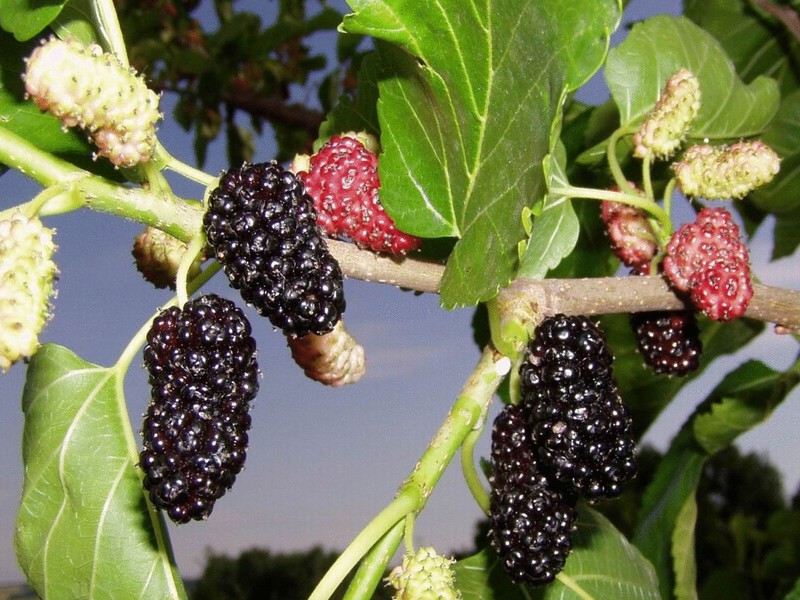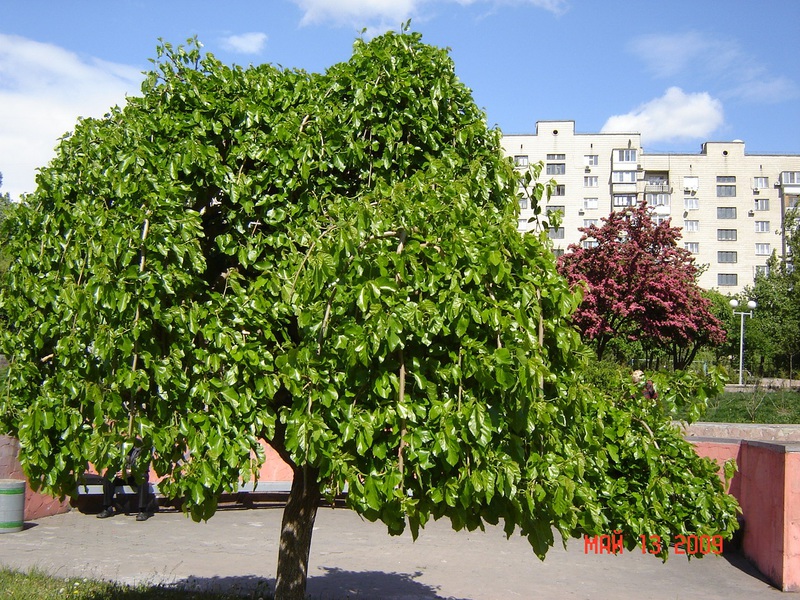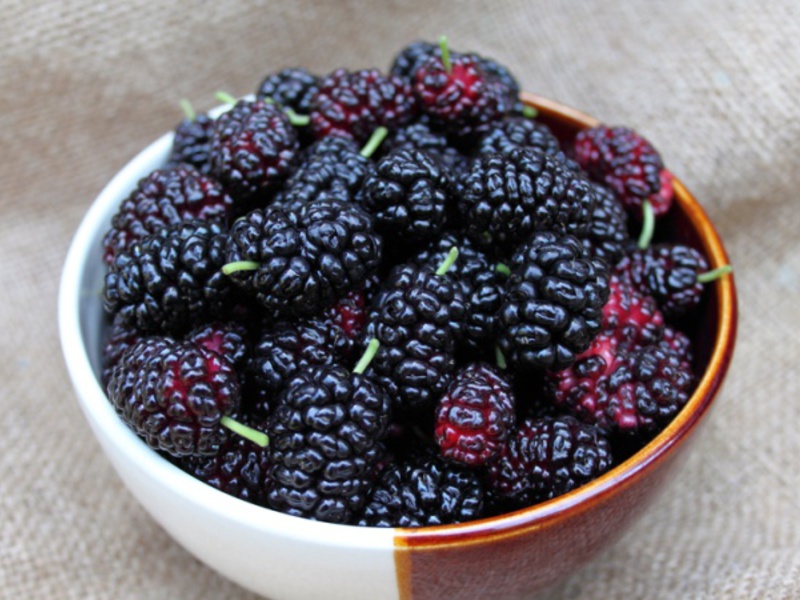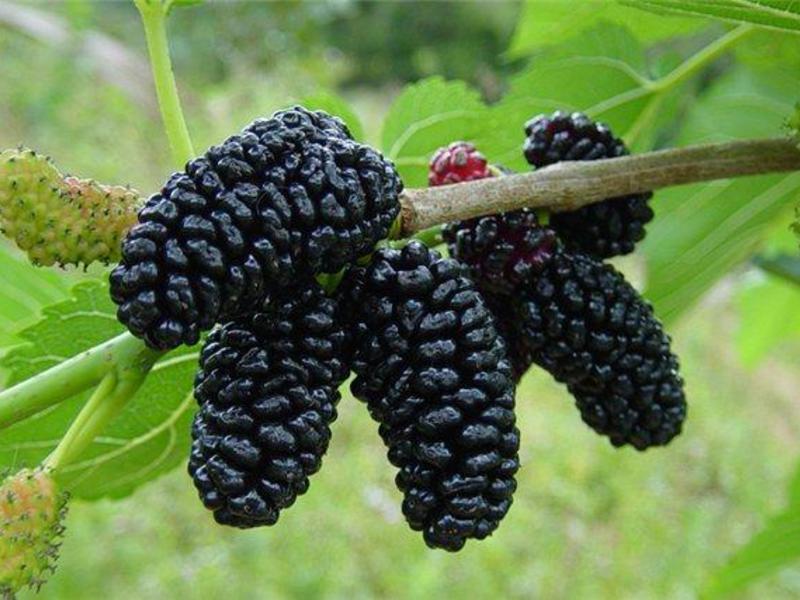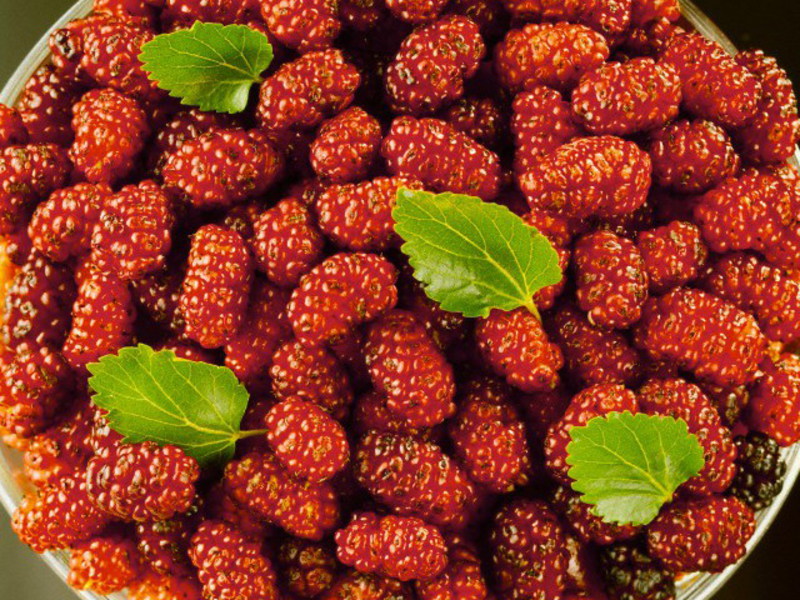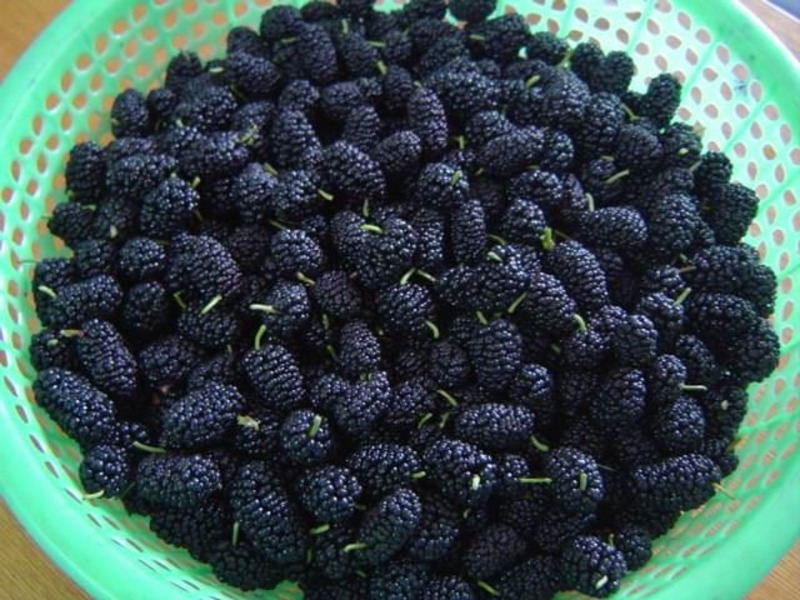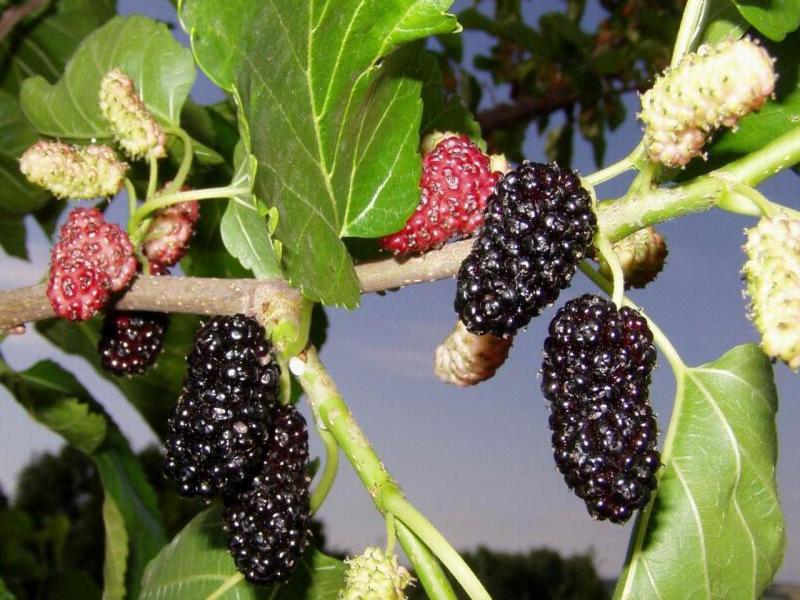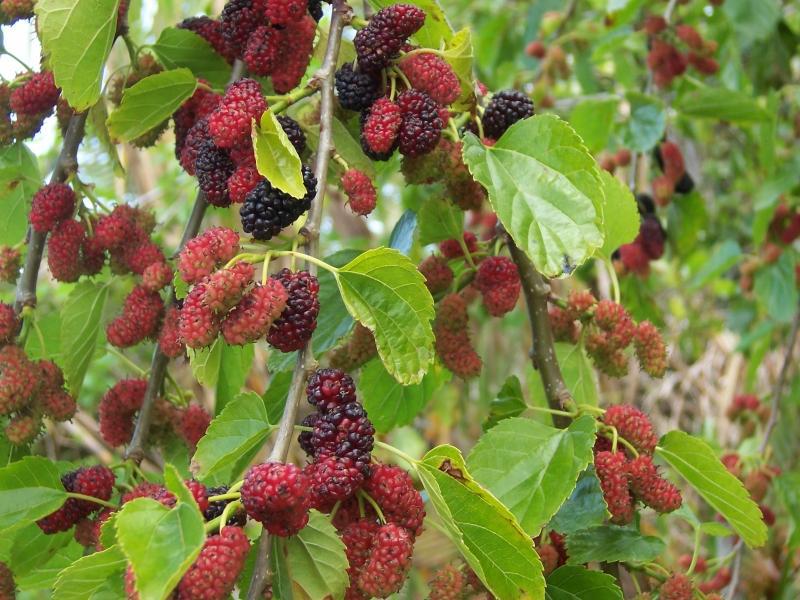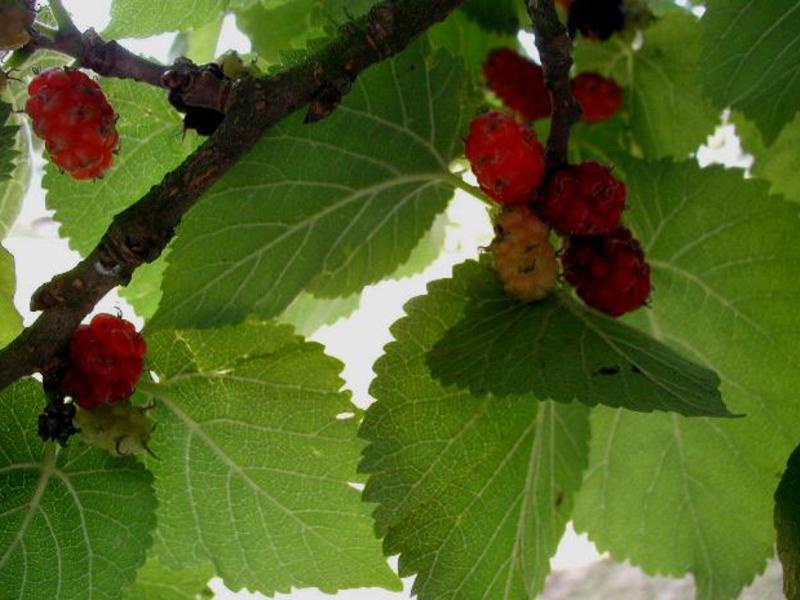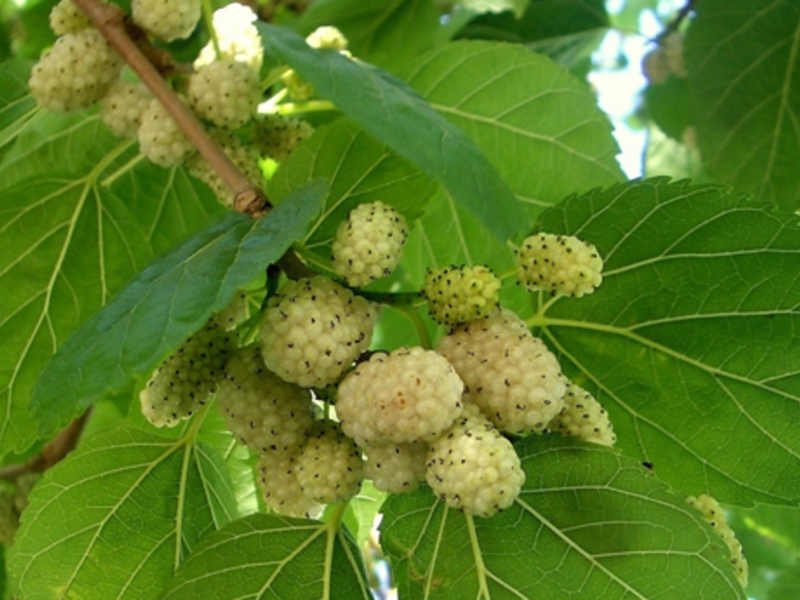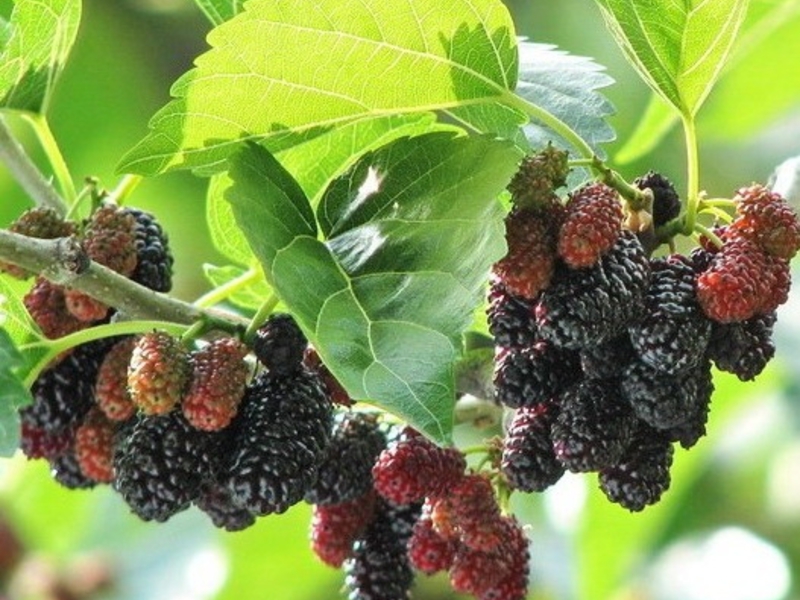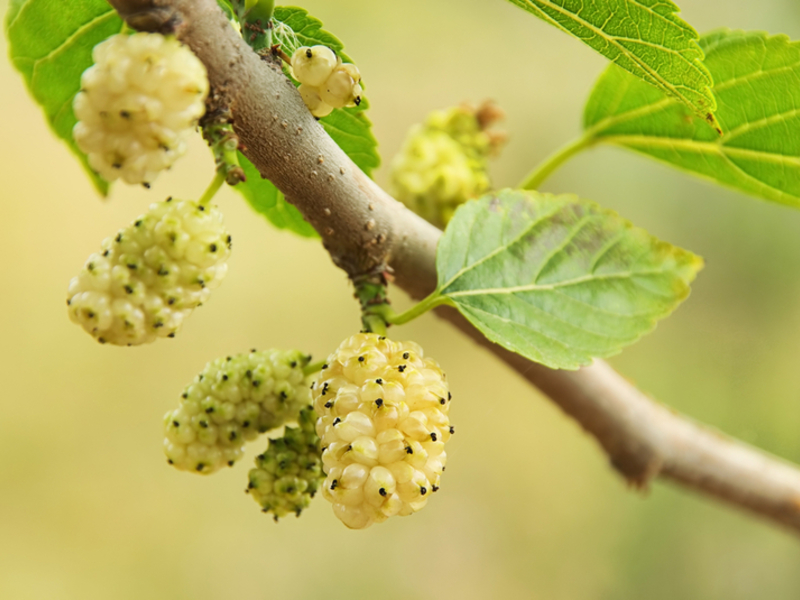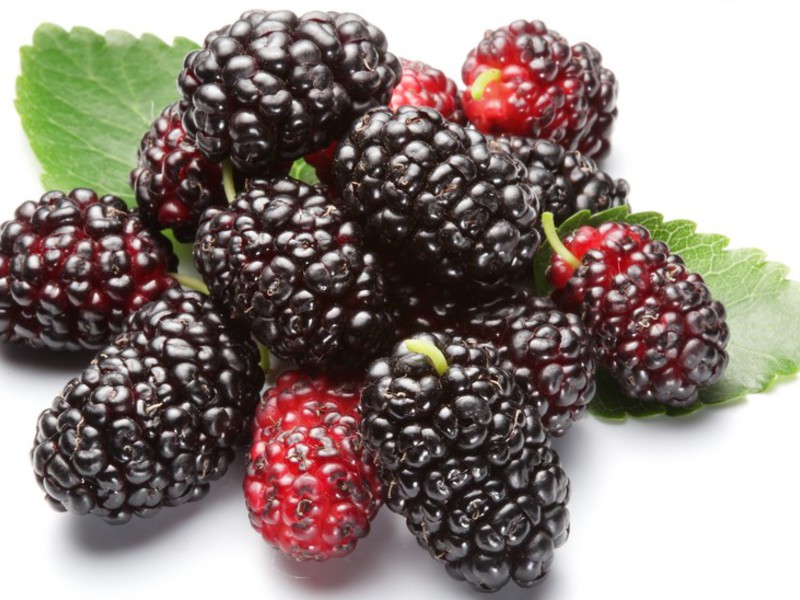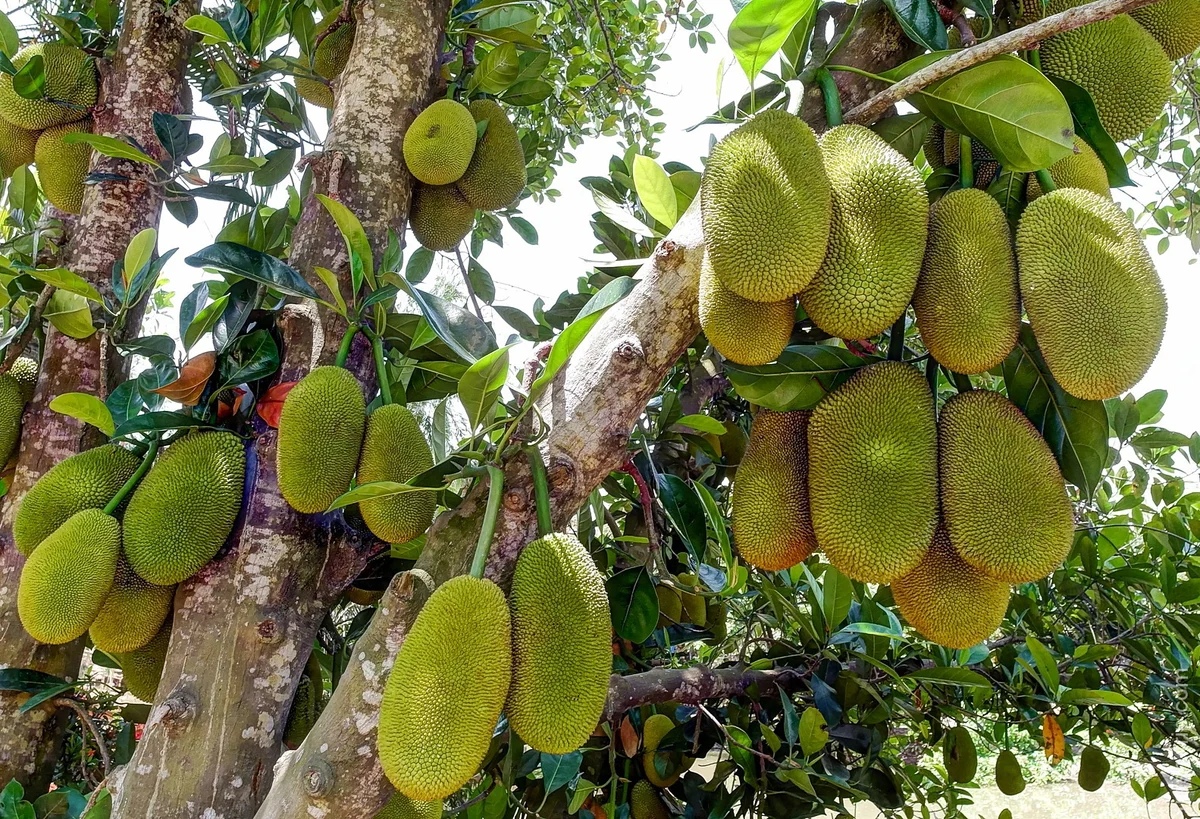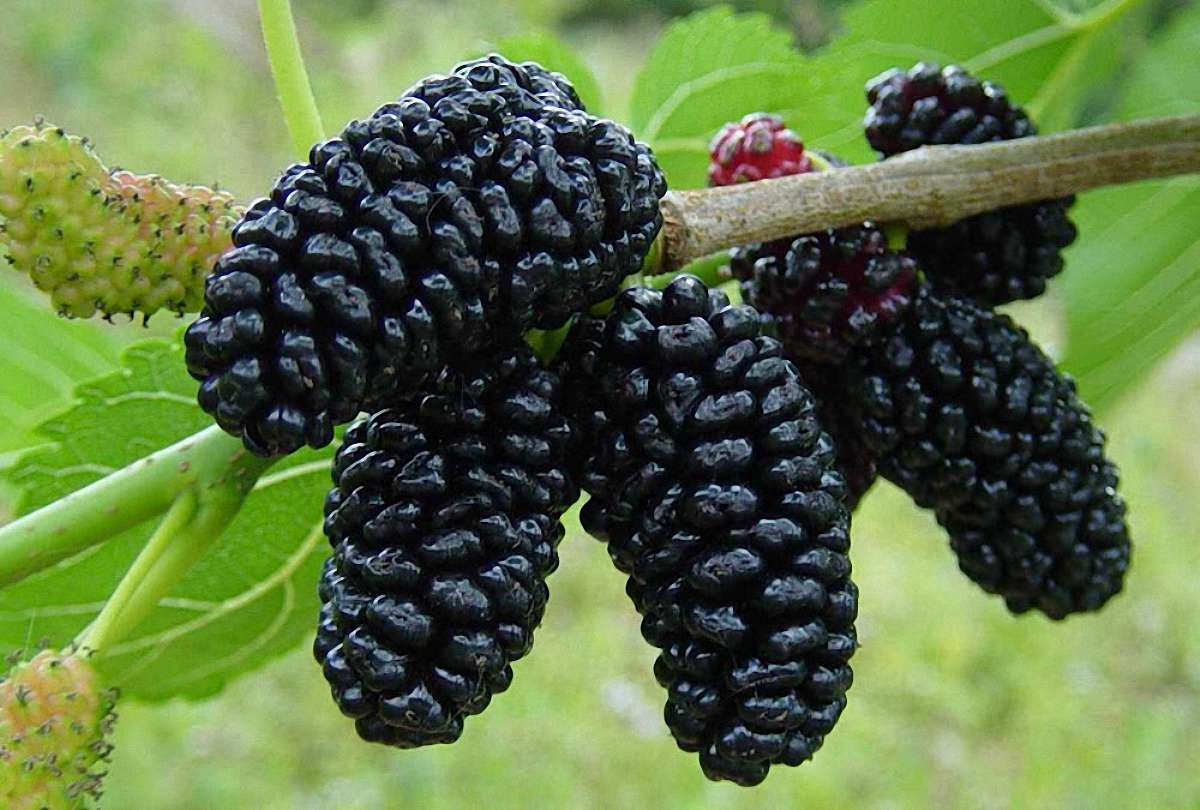The mulberry tree or mulberry can truly be called a long-liver. It lives an average of 200-300 years, but the age of individual specimens reaches 500-1000 years. And in Jericho (Israel), a mulberry tree was discovered, the age of which has already reached 2000 years!
The tree grows well within the city and, due to its excellent fruiting, is often used in landscape design. The plant looks great in the form of a hedge, as well as in group plantings. The most popular are decorative species of mulberry (for example, weeping mulberry), as well as dwarf mulberry varieties with a spherical crown. A mulberry tree with a narrow pyramidal and pyramidal crown is more often used in group plantings. Such trees can reach heights of up to 6 meters.
The people call the mulberry tree mulberry, nutcracker, shah-tuta, here etc.
Content
Types of mulberry, photo
The mulberry family includes 17 species of mulberry tree. It grows in subtropical and moderately warm zones of America, Africa and Asia. One tree 10 - 15 meters high can yield up to 200 kg. Its fruits (berries) are similar to blackberries and raspberries and are also a composite drupe. Mulberries are black, purple or white-pink in color.
In Russia, the most two types of mulberry trees are popular:
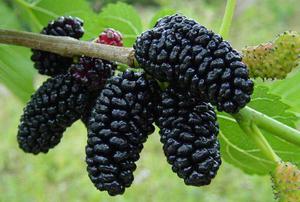 White mulberry. A fairly frost-resistant mulberry variety, widespread almost everywhere. The plant has delicate leaves that silkworm caterpillars feed on. The fruits are cloyingly sweet and juicy, pinkish, yellow or white, but (!) There are also dark ones. The bark is gray and rather thick.
White mulberry. A fairly frost-resistant mulberry variety, widespread almost everywhere. The plant has delicate leaves that silkworm caterpillars feed on. The fruits are cloyingly sweet and juicy, pinkish, yellow or white, but (!) There are also dark ones. The bark is gray and rather thick.- Black mulberry. The tree is native to Iran. The coarse leaves of the plant "do not like" capricious silkworms, therefore they are not suitable for food. But the purple-black berries are quite to the liking of people. The fruits look like blackberries, they have a sweet taste with a slight sourness. Black mulberry is a thermophilic plant, although frost-resistant varieties have also been bred by breeders. The bark of the plant has a reddish-brown tint.
Mulberry tree used in many industries... The most common product of this plant is its mulberry fruit. Mulberry wood is used in the production of musical instruments, and silkworms feed on its leaves, the cocoons of which serve as raw materials for the manufacture of natural silk.
Harvesting of mulberry raw materials
The leaves of the plant can be harvested during the entire period of growth and development of the mulberry tree and dried in attics or under a canopy, the bark is harvested at the beginning of sap flow (early spring), roots - in late autumn. In late June and early August, you can harvest mulberry berries. After collecting them, they must be immediately sent for processing, since the yeast fungi on the surface of the fruit cause fermentation in a day. It is for this reason that it is very problematic to dry the berries, but if you managed to do it, they must be stored in a tightly closed container, since they absorb water very quickly, which, in turn, leads to spoilage of raw materials.
The medicinal properties of the mulberry tree
Although mulberry is not a medicinal plant, its roots, bark and berries have long been used to treat various diseases. Mulberry has a wide range of beneficial properties and rich in mineral and vitamin composition, thanks to which the berry has found application in folk medicine. In addition, mulberry is used in the field of culinary: various syrups, jellies and compotes are prepared from the berry.
Chemical properties of raw materials
 Mulberry fruits synthesize almost all vitamins necessary for the human body, and also accumulate micro- and macroelements that contribute to the normal functioning of all systems and internal organs. According to traditional healers, mulberries improve immunity, as well as 1 glass of mulberry fruits eaten per season will serve as reliable protection against diseases of the pancreas and kidneys.
Mulberry fruits synthesize almost all vitamins necessary for the human body, and also accumulate micro- and macroelements that contribute to the normal functioning of all systems and internal organs. According to traditional healers, mulberries improve immunity, as well as 1 glass of mulberry fruits eaten per season will serve as reliable protection against diseases of the pancreas and kidneys.
The chemical composition of white and black mulberries has some differences. So, white fruits are distinguished by an increased concentration of carbohydrates, and more organic acids and iron accumulate in black berries.
Pharmacological properties of mulberry fruits
Organic iron compounds that make up the black mulberry contribute to the formation of hemoglobin, so the fruits are successfully used in the treatment of iron deficiency anemia. If anemia is caused by a lack of B vitamins, black mulberry berries will also have a beneficial effect on hematopoietic activity.
All fruits, regardless of the type, have a beneficial effect on the cardiovascular system, therefore they are widely used in the treatment of cardiovascular diseases.
Mulberries have positive effect on the work of the digestive tract... It is noteworthy that unripe fruits with an increased concentration of tannins are successfully used for diarrhea, and ripe berries help to improve intestinal motility and are used as a delicate laxative.
Mulberry has a positive effect on the pancreas, increasing its enzymatic activity. In addition, the berries have a diuretic effect and stimulate bile secretion.
Due to the high content of zinc and chromium, mulberry leaves are widely used in the treatment of prostate diseases, and are also part of antidiabetic preparations.
The bark of mulberry branches has a stimulating effect on tissue regeneration processes, the bark from the roots of the plant helps to lower blood pressure, and also has expectorant properties.
Traditional medicine recipes
Mulberry raw materials are widely used to treat various diseases.
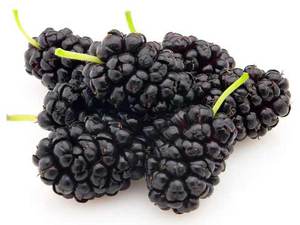 Decoction of bark of branches... Grind the bark. Score 1 tsp. raw materials with water (250 ml) and cook for 15 minutes. Let it brew for an hour and take 50 ml before meals 3-4 times a day. The remedy has expectorant and diuretic properties. A decoction of the bark of the plant is also used as a pain reliever. 10 gr. Pour boiling water over the crushed raw materials and leave for 1 hour. For relief of painful attacks, take 20 grams. drink 3 times a day.
Decoction of bark of branches... Grind the bark. Score 1 tsp. raw materials with water (250 ml) and cook for 15 minutes. Let it brew for an hour and take 50 ml before meals 3-4 times a day. The remedy has expectorant and diuretic properties. A decoction of the bark of the plant is also used as a pain reliever. 10 gr. Pour boiling water over the crushed raw materials and leave for 1 hour. For relief of painful attacks, take 20 grams. drink 3 times a day.- Leaf decoction... One Art. l. pour dry leaves with cold water (0.5 l.), put on fire and bring to a boil. Insist 30 minutes. The broth is used for diseases of the respiratory tract as an expectorant. The treatment regimen is the same as when using the bark - 50 ml each before meals. With edema of renal and cardiac origin, the decoction should be taken before bedtime. The tool helps to normalize the pulse rate, and also with its help you can quickly and effectively relieve the patient from shortness of breath and eliminate pain in the heart. In addition, it can be used to heal burns and wounds in the form of a compress. A decoction of the leaves is used to improve the condition of a patient with diabetes mellitus. For this, crushed leaves of a mulberry tree are added to food.For the same purpose, you can prepare a medicinal decoction. Twenty gr. pour boiling water (200 ml) of crushed raw materials and boil in a water bath, strain. Consume before meals no more than 3 times during the day.
- Fresh mulberry juice... It is used in the treatment of colds and sore throats. To do this, dilute the juice with water in a 50/50 ratio, and rinse your mouth with the resulting solution. For the treatment of a runny nose, 2-3 drops of fresh juice should be instilled into the nose every 4 - 5 hours.
- Fresh mulberry berries have the effect of vivacity. In folk medicine, mulberries are also used to improve performance. In order to strengthen endurance and improve well-being, it is recommended to eat fresh berries (at least 1.5 kg) for three weeks, dividing the volume into 5-6 doses.
- Infusion of leaves... It is used at elevated temperatures. One Art. l. Pour boiling water over raw materials and leave for 2 hours, strain. Take 50 ml of infusion of berries several times a day. It is prescribed for the treatment of colds as a diaphoretic and diuretic.
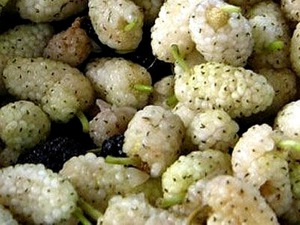 Ointment... Healing ointment based on mulberry bark is used for the treatment of skin diseases (dermatitis, eczema, etc.), as well as for the treatment of traumatic injuries of the skin (abscesses, cuts, burns). 2 tbsp. l. grind the bark (preferably in a coffee grinder) and pour 100 ml of sunflower oil. Mix the ingredients well until a homogeneous mass is obtained (if necessary, you can add bark powder in small portions). Place the resulting mixture in the refrigerator. Treat the affected areas of the skin 4 - 5 times a day.
Ointment... Healing ointment based on mulberry bark is used for the treatment of skin diseases (dermatitis, eczema, etc.), as well as for the treatment of traumatic injuries of the skin (abscesses, cuts, burns). 2 tbsp. l. grind the bark (preferably in a coffee grinder) and pour 100 ml of sunflower oil. Mix the ingredients well until a homogeneous mass is obtained (if necessary, you can add bark powder in small portions). Place the resulting mixture in the refrigerator. Treat the affected areas of the skin 4 - 5 times a day.- Antidiabetic fee... It contains blueberry leaves, corn silk, bean pods and mulberry leaves. All components are taken in equal proportions. Grind and mix the raw material thoroughly. One Art. l. pour boiling water over the prepared mixture (250 ml), cook for 1-2 minutes and leave for 2 hours, drain. Consume 2-3 times a day.
- Mulberry syrup... It is used in the treatment of colds, as well as for prolonged uterine bleeding in women.
The mulberry tree has practically no contraindications for use. The only obstacle to the use of mulberries can be the individual intolerance of the body. In addition, it is not recommended to use mulberry raw materials collected near roads.
Mulberry propagation
The mulberry tree reproduces in the following ways:
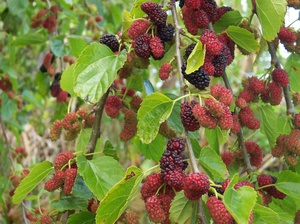 Seeds... Breeders use this method to adapt the mulberry tree to the harsh conditions of the north, or to grow stock. Seeds must be stratified before sowing within two months. If the seeds are sown without preliminary preparation, they should be soaked for 3 days before planting. Sowing should be done in early spring.
Seeds... Breeders use this method to adapt the mulberry tree to the harsh conditions of the north, or to grow stock. Seeds must be stratified before sowing within two months. If the seeds are sown without preliminary preparation, they should be soaked for 3 days before planting. Sowing should be done in early spring.- Vegetative way... The plant can be propagated by grafting, green cuttings, layering (for weeping mulberries) and shoots. Cultivars are usually propagated by grafting. For this, budding is used. The stock is taken from a white mulberry. The vaccination should be done only when the buds of the scion have matured well.
So, the raw material of the mulberry tree is widely used in almost all sectors of the national economy, and the medicinal properties of the mulberry tree are well known and often used by healers all over the world. Following the above tips and tricks, you will not only be able to enjoy the delicious mulberries, but also with their help gain health and good mood.
